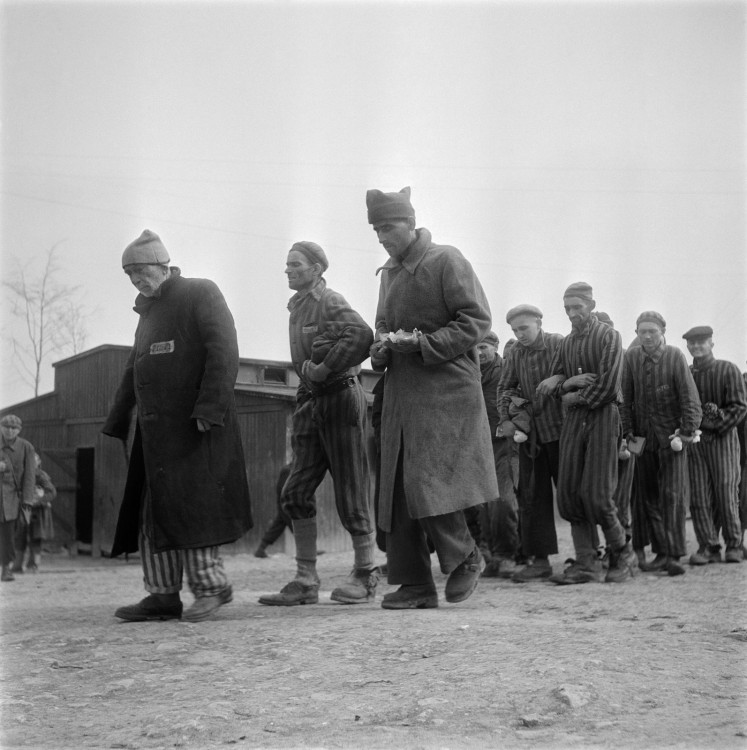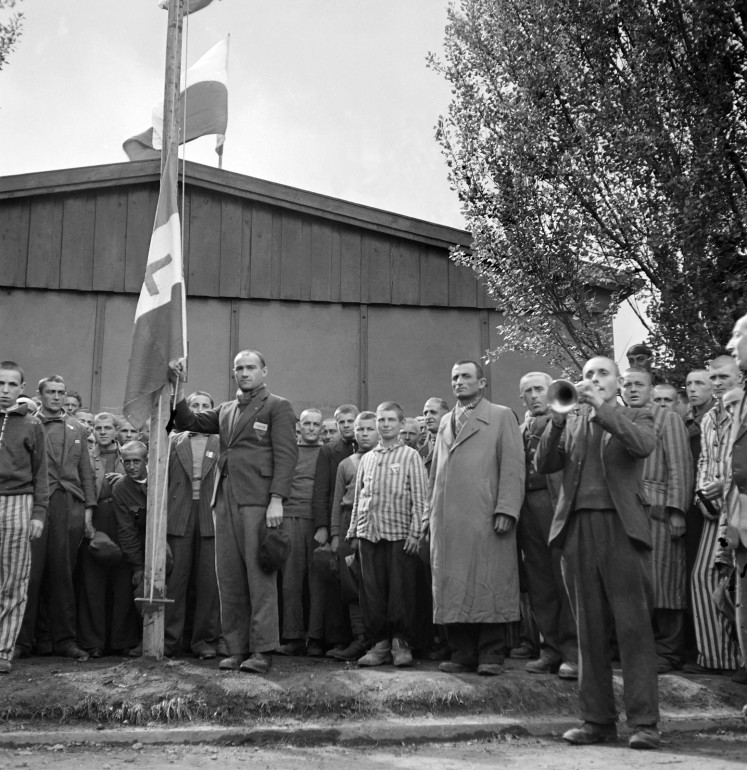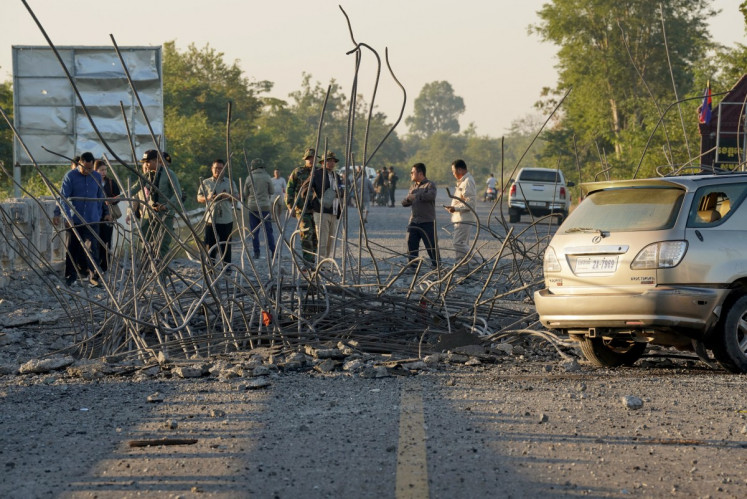Popular Reads
Top Results
Can't find what you're looking for?
View all search resultsPopular Reads
Top Results
Can't find what you're looking for?
View all search resultsA photographer's search for his mother in Nazi concentration camps
Change text size
Gift Premium Articles
to Anyone
P
iles of skeletal bodies, the doors to a crematorium, emaciated faces -- an AFP photographer documents the full horror of the Nazi extermination camps in the spring of 1945, as he searches for his deported mother.
One-time fashion photographer and having escaped as a prisoner from a train bound for Germany, later joining the Resistance, Eric Schwab was one of the first photographers to work for AFP after it was refounded in August 1944 in a liberated Paris.
As a war correspondent, he follows the Allied troops as they advance, becoming a witness to the horrors discovered as the forces progressively liberate the German death camps.
Weak and ill survivors of the Nazi concentration camp in Buchenwald march April 1945 towards the infirmary, after the liberation of the camp by Allied troops. The construction of Buchenwald camp started 15 July 1937 and was liberated by US General Patton's army 11 April 1945. Between 239,000 and 250,000 people were imprisoned in this camp. About 56,000 died among which 11,000 Jews. On the 4th of April Patton's army liberated the Buchenwald sub-camp in Ohrdruf, where they only found about fifty corpses of prisonners. The 9000 Buchenwald commandos - hundreds of Polish, Russian, Yugoslavian, Italian and French, some Hungarian and Russian Jews, and gypsies - had been forced by the Nazis to march 80 km on April 2nd from Ohrdruf to the main camp Buchenwald. Most of them were evacuated again April the 7th to Dachau and Flossenburg. Much died during this ordeal. On the 11th of April the International Committee (created in August 194Dépo3 by the prisoners), who managed to obtain and hide arms during previous shelling, gave the order for an insurrection which pave the way for the US army. (AFP/Eric Schwab)
A painful quest to find his mother drives him. Elsbeth, a Jewish German, was deported in 1943. Since then, he has not heard anything.
One of Schwab's first published photographs is of the entrance gate to Buchenwald, bearing the terrible inscription "Jedem das Seine" ("To each what he deserves").
A few days earlier, Heinrich Himmler has given the order to liquidate the camp. The braziers are still smoking, and the bodies of prisoners executed by a bullet to the head are strewn across the site.
At Dachau, another concentration camp, Schwab takes portraits that lay bare the inhumanity suffered. He photographs the number tattooed on the bone-thin arm of a Jewish prisoner.
Another shot shows a man in striped prison garb talking through barbed wire to a woman held in the camp's brothel.
There are also captured moments of hope, as with a group of French prisoners listening to the Marseillaise national anthem. Or another of Polish, German and French priests celebrating mass for the camp's dead in the chapel.
Schwab's journey takes him to the camp at Terezin (Theresienstadt), in what is today the Czech Republic. A few days from the end of the war, the region is in chaos as vast numbers flee advancing Soviet troops towards US-controlled territory.
French prisoners raise the flag of Free France with the Lorraine cross while singing the national anthem, 'La Marseillaise', 29 April 1945 upon the liberation of the Nazi concentration camp of Dachau, near Munich, by Allied troops. (AFP/Eric Schwab)Here, the photographer's dream comes true. In May 1945, he discovers a frail woman with white hair, wearing a nurse's cap: his mother.
Then aged 56, Elsbeth has managed to escape death and has been looking after child survivors at the camp. It is, naturally, an intensely emotional reunion but it appears that, out of respect, he refrains from photographing his mother, or at least from publishing the images.
After the war, Eric Schwab and his mother leave France, settling in New York in 1946.
Photographic evidence of the concentration camp horrors was widely disseminated as early as 1945, but Schwab's work did not earn him the renown of some of the other photographers.
As often happens with news agency photos, his images were printed in the media but not attributed to him by name.
It would take several years for his talent to be fully recognised, particularly the powerful portraiture and composition found throughout his now iconic works.
Schwab dies in 1977 aged 67.













